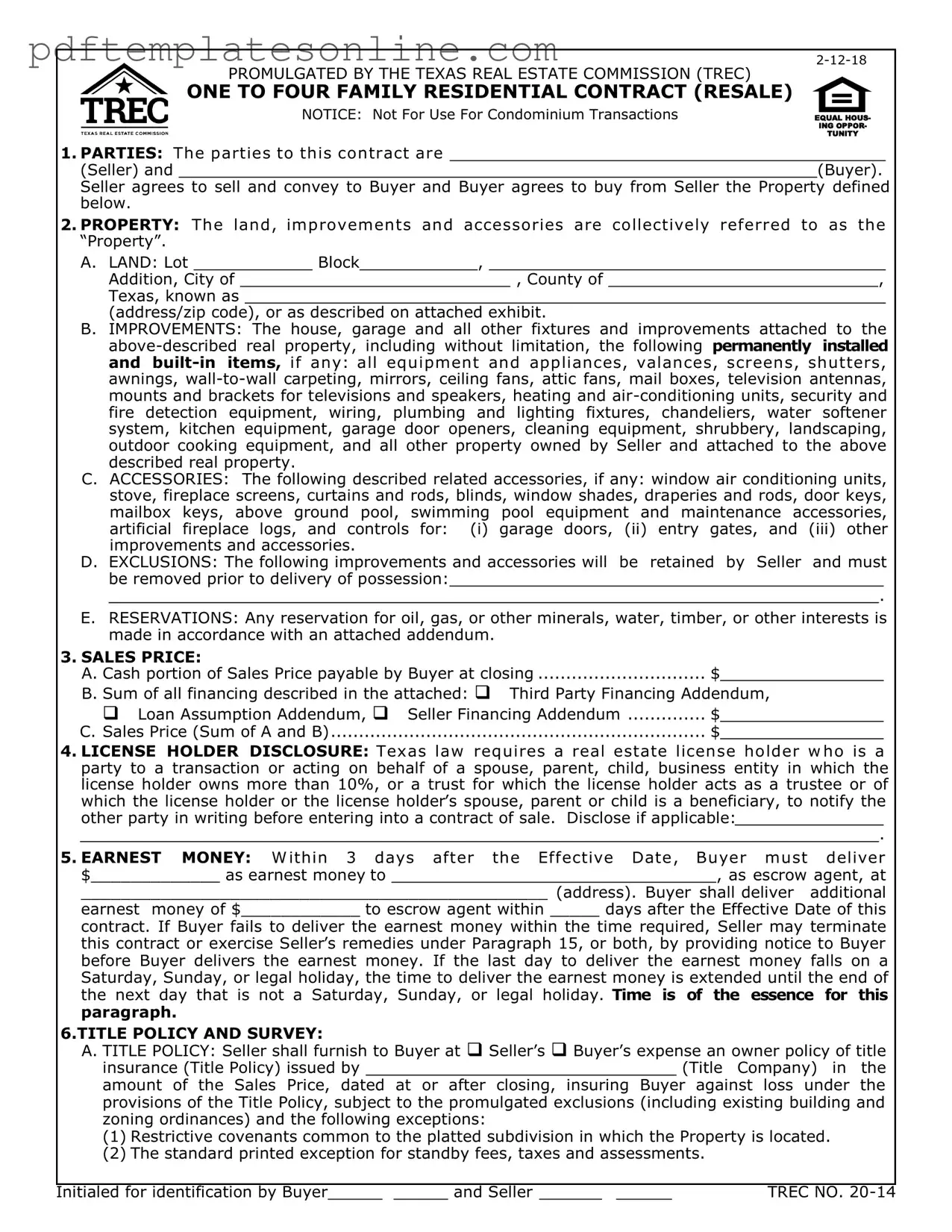Filling out the TREC One to Four Family Residential Contract form can be a daunting task for many individuals. One common mistake is failing to provide accurate property details. Buyers and sellers often overlook essential information such as the correct address, legal description, or property identification number. Inaccuracies can lead to confusion or legal disputes down the line.
Another frequent error involves neglecting to specify the closing date. This date is crucial for both parties, as it sets the timeline for the transaction. Without a clear closing date, misunderstandings may arise, leading to delays or frustration. Both buyers and sellers should agree on a date and ensure it is clearly stated in the contract.
Additionally, many individuals do not fully understand the implications of financing options. When filling out the contract, it's important to specify whether the purchase will be made with cash, a conventional loan, or another financing method. Misunderstandings in this area can complicate the transaction and may even jeopardize the deal.
Another mistake often seen is the lack of clarity regarding repairs and maintenance. Buyers may assume that certain repairs will be made, while sellers may not agree to them. It's vital to explicitly outline any repairs that need to be completed before closing. This clarity helps manage expectations and prevents disputes after the contract is signed.
Lastly, many people fail to include necessary contingencies in the contract. Contingencies protect buyers and sellers by allowing them to back out of the deal under specific circumstances, such as failing to secure financing or unsatisfactory inspection results. Omitting these clauses can leave one party vulnerable, so it's essential to include them to safeguard everyone's interests.
